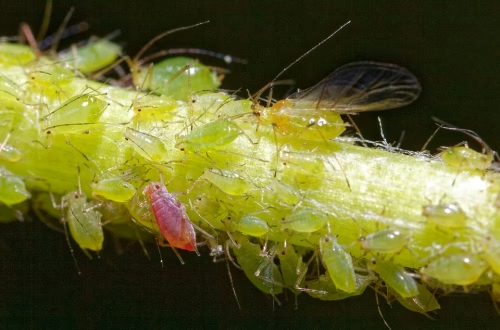Summary:
Bed bug infestations are a growing concern for homeowners, renters, and businesses alike. Bed bug heat treatment companies specialize in using high temperatures to eliminate these resilient pests, offering a chemical-free and highly effective solution. This method addresses the increasing resistance of bed bugs to traditional pesticides and complies with strict state and federal regulations. Understanding the benefits and processes of heat treatment can help you make informed decisions to protect your property and health.
What This Means for You:
- Heat treatment is a safe, non-toxic solution for bed bug infestations, ideal for homes with children or pets.
- Act quickly to prevent bed bugs from spreading to other areas of your property or neighboring units.
- Choose a licensed and experienced bed bug heat treatment company to ensure effective results.
- Be aware of the potential for re-infestation and take preventive measures after treatment.
Bed Bug Heat Treatment Companies Explained:
Bed bug heat treatment companies specialize in eradicating bed bug infestations using controlled high temperatures. This method involves raising the temperature of the affected area to 120-140°F, a range that is lethal to bed bugs and their eggs. Unlike chemical treatments, heat treatment penetrates deep into furniture, walls, and other hard-to-reach areas, ensuring comprehensive eradication. It is a preferred solution for its efficiency, safety, and minimal environmental impact.
These companies use specialized equipment, such as industrial heaters and fans, to evenly distribute heat throughout the space. The process typically takes 6-8 hours, depending on the size of the infestation and the area being treated. Heat treatment is particularly effective in multi-unit buildings, hotels, and homes where bed bugs can easily spread. By eliminating the need for pesticides, it also reduces the risk of chemical exposure for occupants.
Types of Pest Issues:
Bed bugs are the primary focus of heat treatment companies, but these pests are notoriously difficult to control. They hide in cracks, crevices, and fabrics, making them resistant to many traditional pest control methods. Bed bugs are also highly mobile, often spreading through luggage, clothing, and furniture. This makes them a common issue in hotels, dormitories, and multi-family housing units.
State and federal regulations often require pest control companies to use methods that minimize harm to humans and the environment. Heat treatment aligns with these guidelines, as it does not involve harmful chemicals. However, some states may have specific licensing requirements for companies offering this service. It’s essential to verify that the company you choose complies with local laws and has the necessary certifications.
Common Pest Control Methods:
Heat treatment is one of the most effective methods for bed bug control, but it is often used in conjunction with other strategies. Integrated Pest Management (IPM) combines heat treatment with vacuuming, steam cleaning, and the use of mattress encasements to prevent re-infestation. This multi-faceted approach ensures that all life stages of bed bugs are addressed.
Another common method is chemical treatment, which involves applying pesticides to infested areas. However, bed bugs have developed resistance to many chemicals, making this approach less effective. Heat treatment, on the other hand, kills bed bugs at all stages of their life cycle, including eggs, which are often immune to pesticides. This makes it a more reliable solution for severe infestations.
Risks and Consequences:
Ignoring a bed bug infestation can lead to severe consequences. These pests multiply rapidly, and a small infestation can quickly become a widespread problem. Bed bugs feed on human blood, causing itchy bites and potential allergic reactions. Prolonged infestations can also lead to psychological stress, sleep disturbances, and social stigma.
In addition to health risks, bed bugs can cause financial strain. Infested furniture and belongings may need to be discarded, and repeated pest control treatments can be costly. For businesses, such as hotels or rental properties, a bed bug infestation can damage reputation and lead to lost revenue. Addressing the issue promptly with a professional heat treatment company can mitigate these risks.
Choosing a Pest Control Service:
Selecting the right bed bug heat treatment company is crucial for effective pest control. Look for a company with extensive experience in heat treatment and a proven track record of success. Verify that they are licensed and insured, and check for certifications from industry organizations, such as the National Pest Management Association (NPMA).
Ask about their process, including the equipment they use and the duration of the treatment. A reputable company will provide a detailed inspection and a customized treatment plan tailored to your specific situation. Additionally, inquire about follow-up services and preventive measures to ensure long-term protection against bed bugs.
People Also Ask About:
- How does heat treatment kill bed bugs? Heat treatment raises the temperature of the infested area to 120-140°F, which is lethal to bed bugs and their eggs. The heat penetrates deep into furniture and walls, ensuring comprehensive eradication.
- Is heat treatment safe for my belongings? Yes, heat treatment is safe for most belongings, including electronics and furniture. However, it’s important to remove heat-sensitive items, such as candles and aerosol cans, before the treatment.
- How long does heat treatment take? The process typically takes 6-8 hours, depending on the size of the infestation and the area being treated.
- Can I stay in my home during heat treatment? No, occupants must vacate the premises during heat treatment due to the high temperatures. Pets and plants should also be removed.
- How much does bed bug heat treatment cost? The cost varies depending on the size of the infestation and the area being treated. On average, heat treatment can range from $1,000 to $3,000.
Expert Opinion:
Heat treatment is widely regarded as one of the most effective and environmentally friendly methods for bed bug control. Experts recommend acting quickly at the first sign of an infestation to prevent it from spreading. While the initial cost of heat treatment may be higher than other methods, its long-term effectiveness and safety make it a worthwhile investment. Always choose a licensed and experienced company to ensure the best results.
Related Key Terms:
- Bed bug heat treatment near me
- Professional bed bug extermination services
- Non-toxic bed bug removal
- Heat treatment for bed bugs cost
- Best bed bug heat treatment companies
- Bed bug heat treatment for apartments
- Eco-friendly bed bug control
Pest Control Disclaimer
This content is for educational purposes only and does not replace professional pest inspection, treatment, or safety advice. Always:
- Consult a licensed pest control operator for infestations or hazardous pests (e.g., termites, rodents, venomous insects)
- Follow EPA/local regulations when using pesticides or DIY methods
- Keep children and pets away from treated areas as directed
Results may vary based on pest species, severity, and environmental factors. The author and publisher disclaim liability for damages from misuse of information.
*Featured image sourced by Pixabay.com




